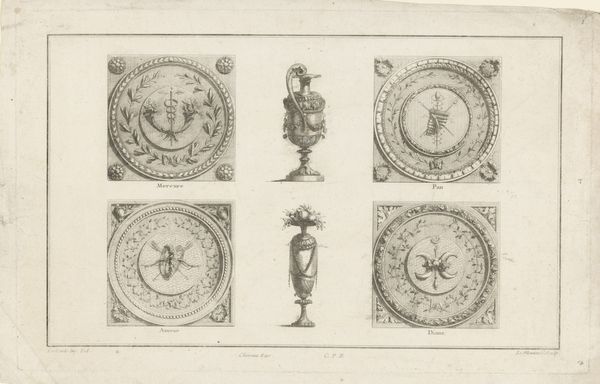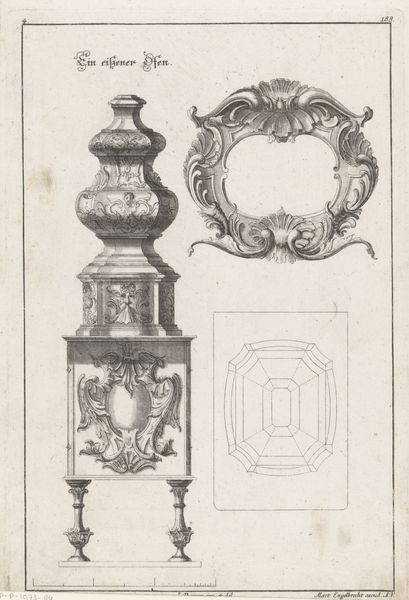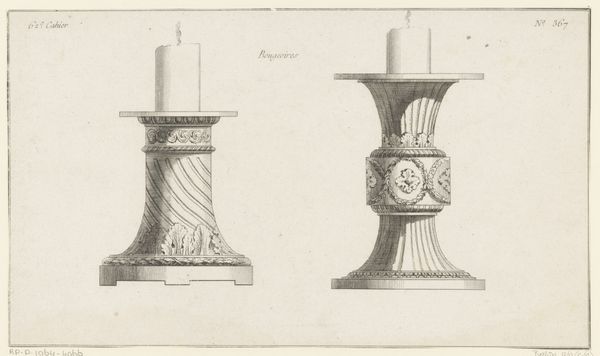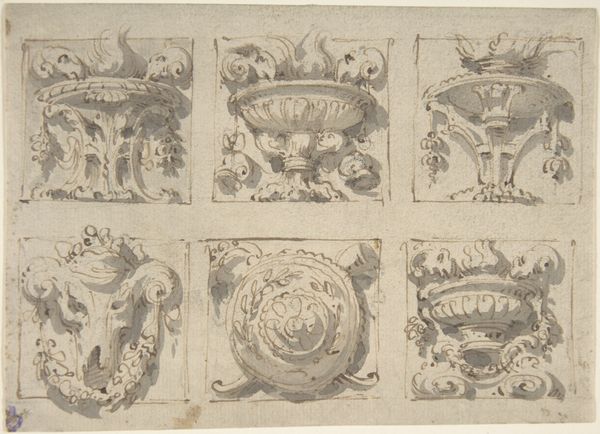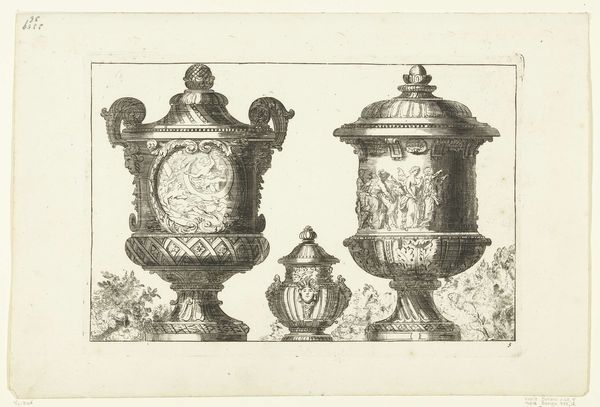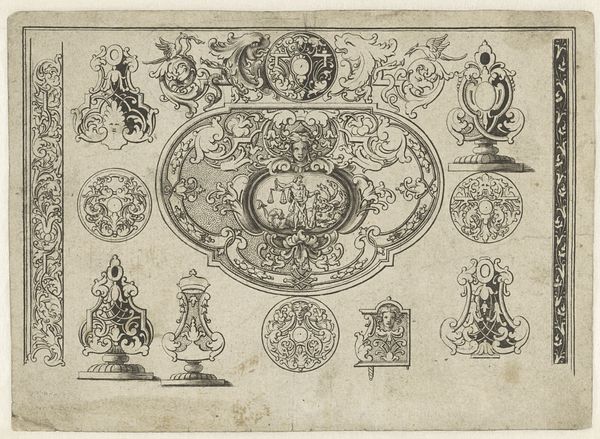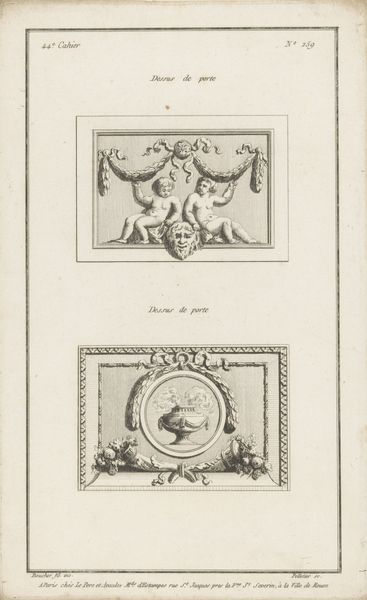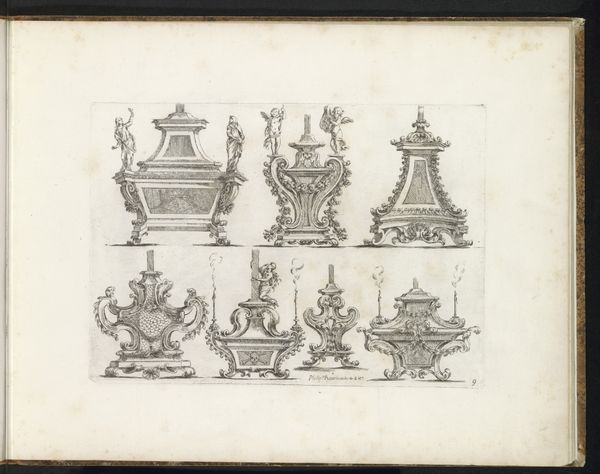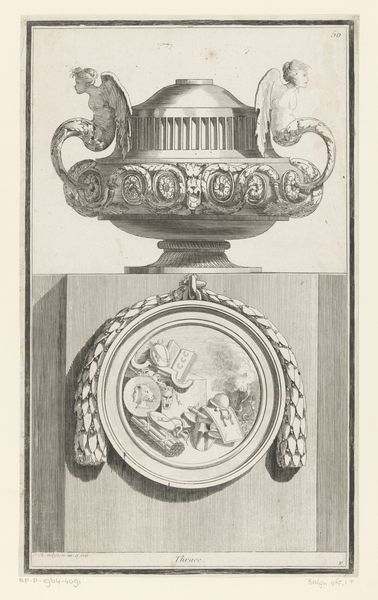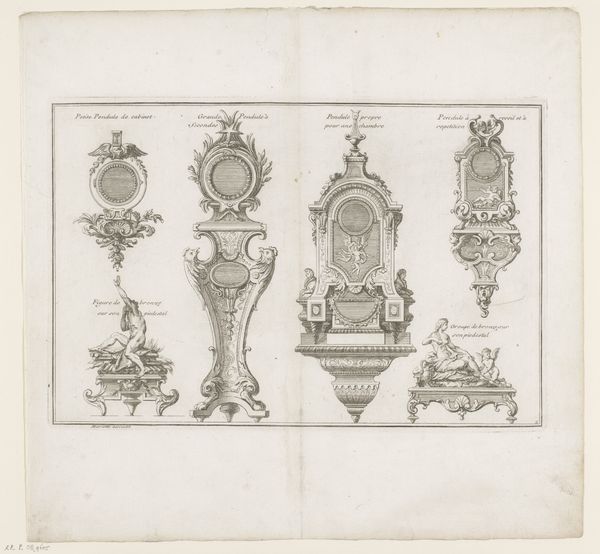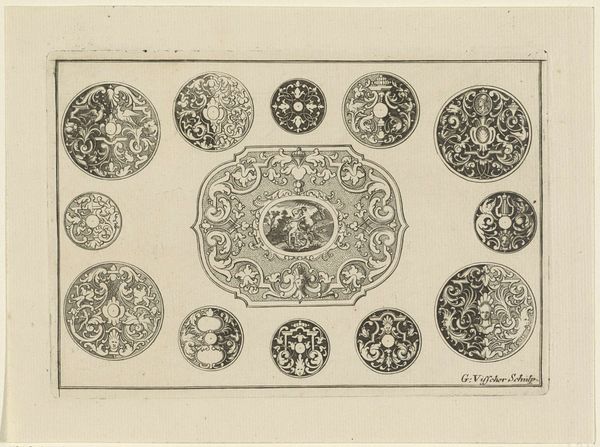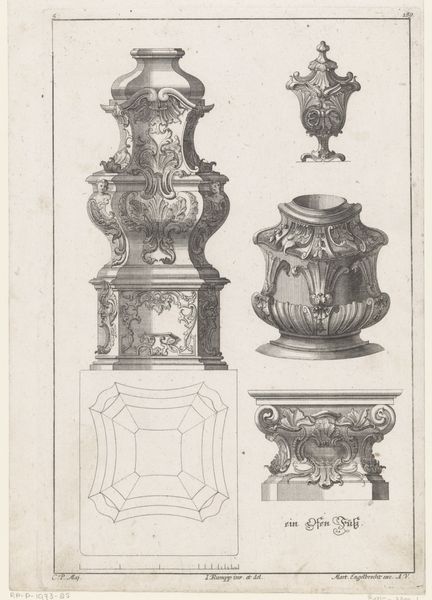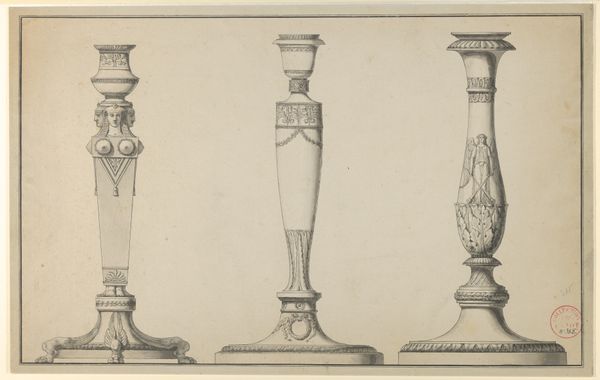
print, engraving
#
neoclacissism
# print
#
old engraving style
#
geometric
#
pen-ink sketch
#
line
#
history-painting
#
engraving
Dimensions: height 217 mm, width 343 mm
Copyright: Rijks Museum: Open Domain
Curator: Well, this strikes me as the most delicate little thing. It has such precise lines; it’s rather formal, even austere. Editor: We're looking at "Tragedie, Juno, Jupiter en Hymen," an engraving by C. Le Meunnié created between 1784 and 1785, currently housed in the Rijksmuseum. What grabs me immediately is the overt display of symbolic forms cast against a backdrop of historical hierarchy and what it tells us about the role and status of artisans like Le Meunnié. Curator: Historical hierarchy – precisely! You see how each figure – Tragedy, Juno, Jupiter, Hymen – is presented, framed almost like medallions, and interspersed between the Greek vases that denote high style? The figures look imprisoned. Each a sacrifice to an idealized marriage or ceremony. Editor: Yes, and each framed within these decorative motifs. The repetitive process of engraving these standardized designs suggests an economic arrangement where skill is harnessed and disseminated across a vast cultural network. It feels more functional than emotive to me, something designed to be reproduced on a grand scale to serve both a decorative and informational purpose. Curator: Informational, yes, insofar as it perpetuates a very particular visual language, but don't you think there's a palpable tension there, between the classical ideals these figures represent and the rigid structure that contains them? Tragedy literally cries out. What a burden. The work asks: where does true feeling have space? Editor: But perhaps Le Meunnié himself is posing this question, using these mythic figures to negotiate his place within a system where artisans facilitate a demand for mass design that rarely honors singular expression. The value, the labor in that repeated process becomes invisible once consumed as 'neoclassical style'. Curator: I can't disagree with that. What appeared to be sterile is, in fact, fraught with layers upon layers of tension and material reality. Now that is illuminating. Editor: Indeed. Considering its historical context allows us to interpret what seems straightforward, technically flawless printmaking as a narrative unto itself.
Comments
No comments
Be the first to comment and join the conversation on the ultimate creative platform.
